Tips & Tricks
How can I rename a color flag?
The color flags are available in green, orange, red and black. In the default settings, they are named yes, no, maybe and final.
Starting with the Pro plan, you can customize the color flags to fit your own workflow and make it perfectly clear to your clients what a color flag means: to do this, you can change the name of the color in the Color flags section of your Default Gallery Settings.
A possible version could look like this:
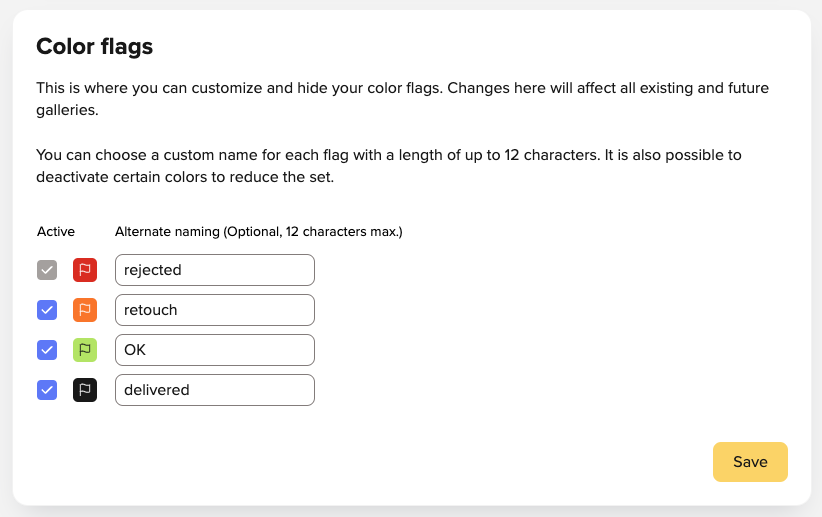
Please do not forget to save the new names for your color flags.
The name you assign to your color flags will then be displayed to you and your clients on every file that has that color flag.
Please note: Renaming your color flags will affect all color flags in your picdrop account. Even existing color flags in previous galleries will be labeled with the new name after saving.
You don't want to use all four color flags? You only want to activate some of them? This is also possible! You can find more information here.
Link to this entryHow do I hide individual color flags in my account?
The default settings for your picdrop account include four color flags: red, orange, green and black. They are named no, maybe, yes and final.
If you want to use color flags in your workflow, e.g. only for a simple YES or NO for individual files, you can always deactivate those colors you don't need in the gallery preferences:
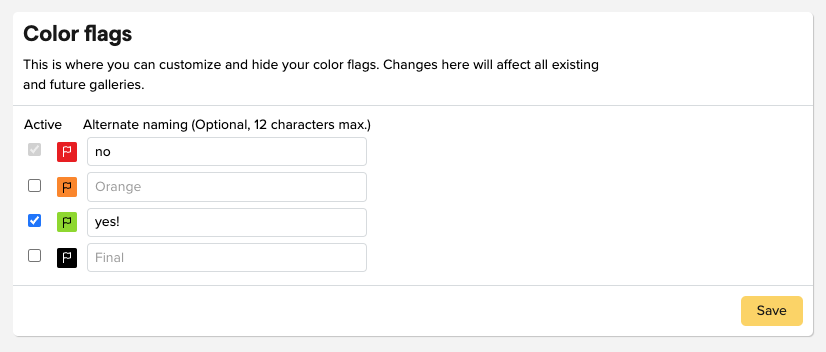
Uncheck the blue checkbox in front of the color flag, like done in the screenshot for the orange and the black color flag. They will then no longer be displayed in all your galleries (including existing ones).
Don't worry: if you have accidentally hidden a color flag, you can of course re-activate it. All files that already had this color flag will keep this color flag.
You want to change the names of the color flags like in the screenshot? You can find the instructions here.
By the way, you can use the function for hiding individual color flags - just like Presentation Mode - starting with the Pro plan.
PS: The red color flag cannot be deactivated. It is needed so that your clients can hide red marked files in Presentation Mode. You can find out how to do this here.
Link to this entryHow do I change the gallery image?
What are gallery images?
Each gallery you create in picdrop can have a gallery image.
You see the gallery image as an icon for the gallery – just like a cover page.
Where are gallery images displayed? Who can see them?
You are logged in as admin in your picdrop account.
Then you can see the gallery images here:
- for each gallery in your gallery overview
- for all sub-galleries within a gallery

In a gallery that contains subgalleries, visitors will see the gallery images for those subgalleries.
It looks like this for your customers:
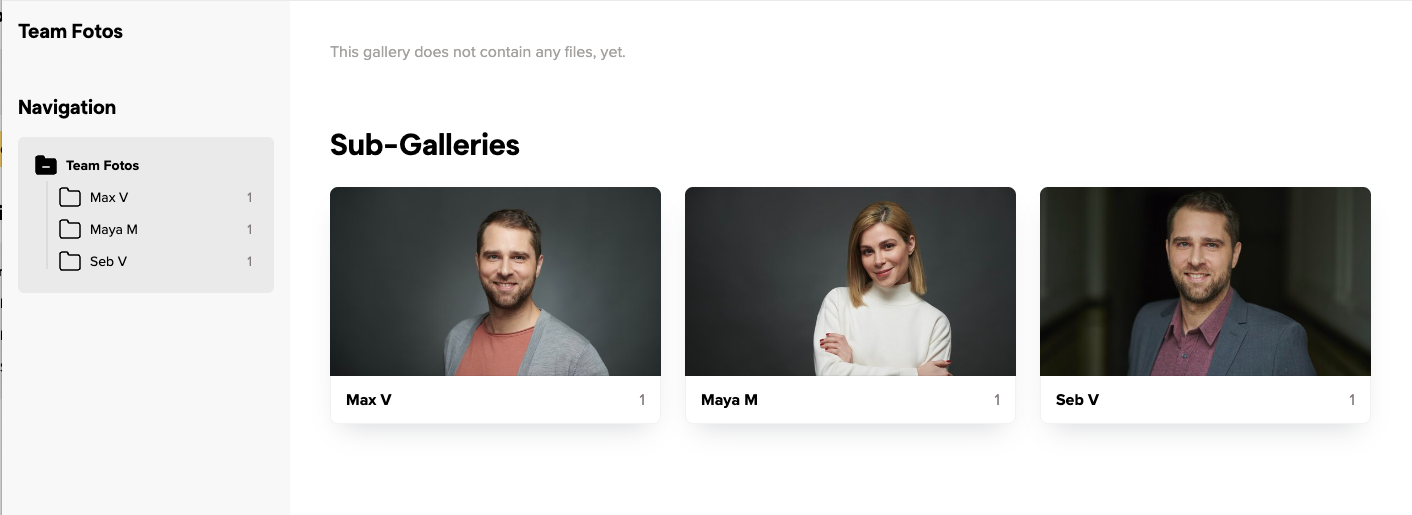
Do you work with client logins?
Then your customers will also see the gallery images in their personal gallery overview after they have entered their access code.
How is the gallery image set automatically?
We always take the first image loaded into the gallery and automatically set it as the gallery image for you.
Galleries that do not contain images therefore do not get an automatic gallery image. They will be displayed with a folder icon instead.
This happens e.g. with galleries that you use for better organization and that do not contain any images themselves, but only sub-galleries.
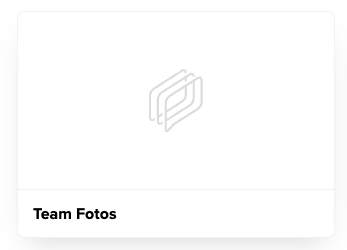
How can I change the gallery image?
You can set the gallery image yourself for each gallery – this means you overwrite the automatically created gallery image or you replace the folder icon for empty galleries with a better fitting image!
You can change the gallery image in these places:
01 - Directly in the gallery
Click on the three dots at the bottom of the desired image – select "Set as gallery image", confirm with the green Save button, done!
In the same menu you can also click on "Upload image" and set an image from your computer directly as a gallery image. You don't have to upload the image to the gallery.
As a gallery image you can use a picture that is not in the gallery itself.

02 - In the gallery overview
In your gallery overview, click on the three dots at the bottom right of a gallery or next to the gallery name and select "Set gallery image". You can now upload an image from your hard drive as a gallery image – you don't have to upload the image to the gallery to do this.
If you want to use an image that is already in the gallery as a gallery image, see the description above at 01.
One more tip:
In the menu with the three dots of the gallery you can also delete an already existing gallery image – then the folder icon will be displayed. If you want to chose another gallery image you can do so as described in the sections 01 and 02 above.
Can I change the crop for my gallery image?
We automatically choose a section directly from the center of the image for the gallery image. With a little trick you can create the exact fitting image and upload it as gallery image:
Export from Lightroom (or any other program) an image with a crop in 16:9 format and at least 800px width - upload it as gallery image for your gallery directly from your computer. This way it will fit perfectly into the frame for the gallery image!
Of course, this does not only work with photos: You can also upload your own designs, lettering, etc. as JPG or PNG and use them as gallery images!

How to copy or move files to another gallery?
You can easily move or copy files from their current gallery to another gallery in picdrop.
This is a step by step guide on how to do this.
First select the files you want to move or copy. To do so, click on the blue plus sign that appears in the upper left corner of the file when hovering the mouse over it.
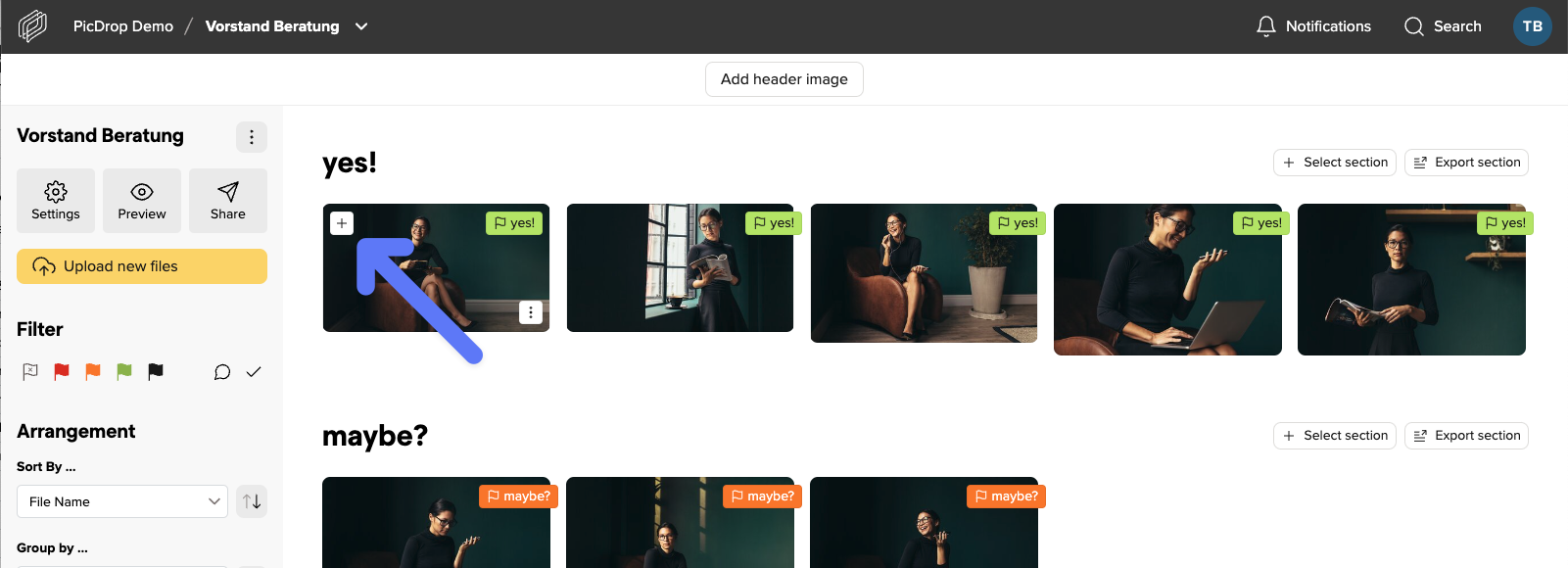
Pro tipp: You can also quickly select any number of files to copy or move from a saved set or any filter set in the filter bar.
When you have selected all files, click on the Move / Copy icon located in the export bar at the bottom of the screen.
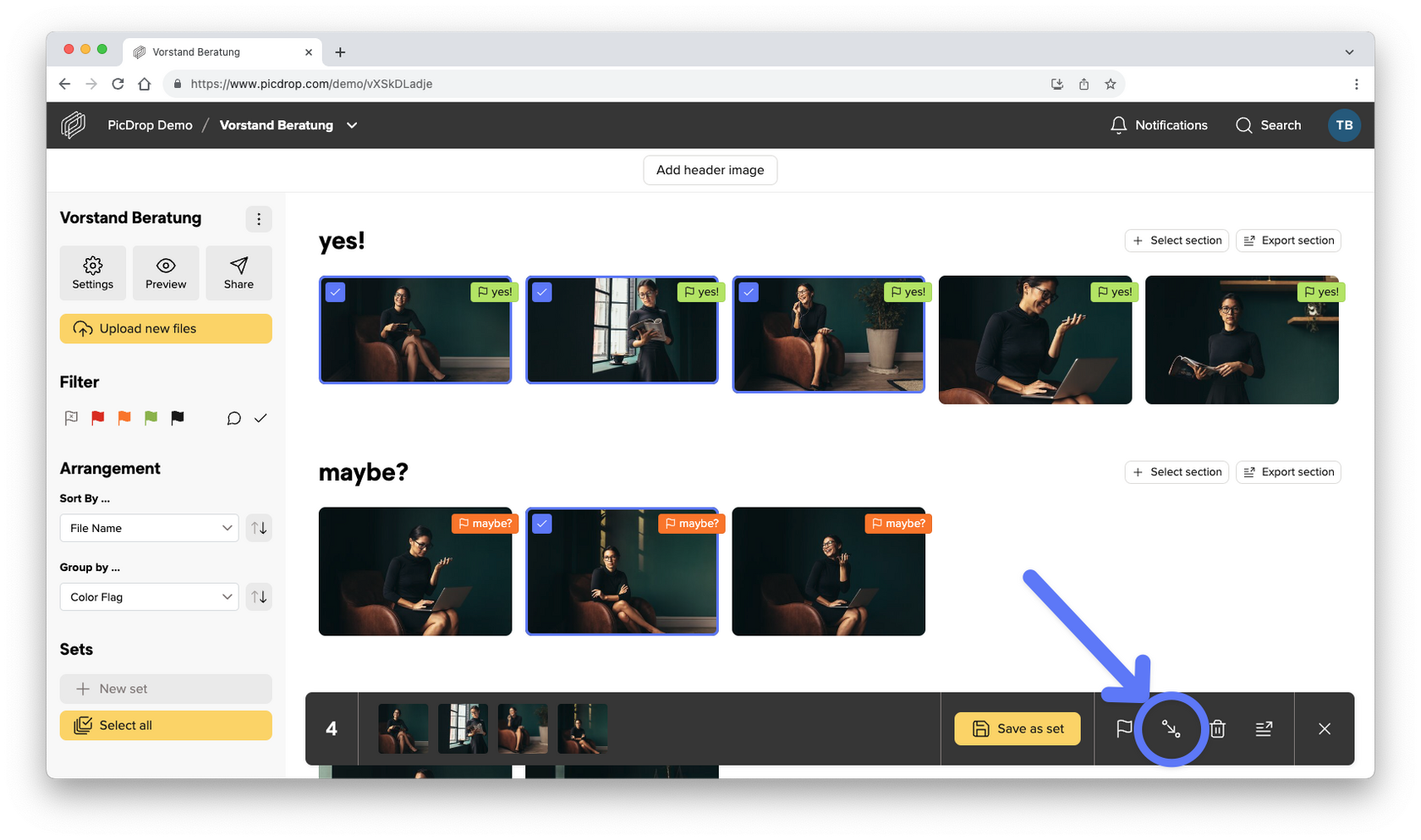
In the opening menu you can now choose whether you want to move or copy the files.
Select the desired target gallery in the list of your galleries or simply create a new gallery in the lower left corner.
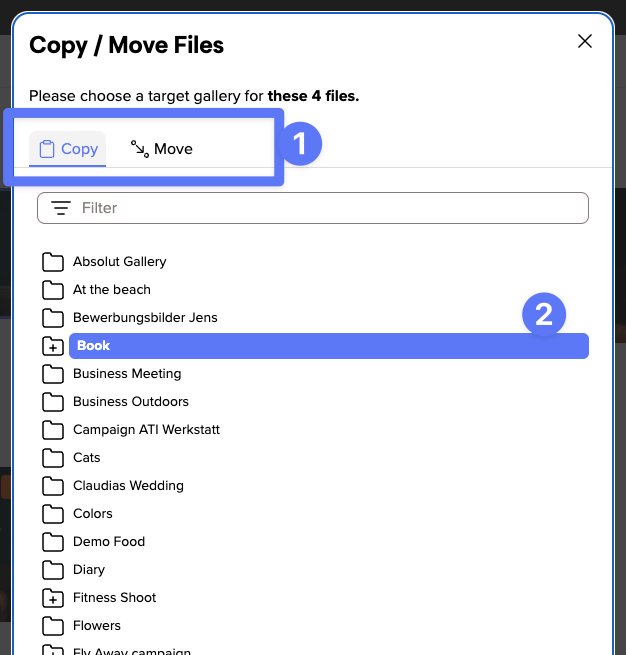
Confirm the selected action with the button at the bottom right.
The success message shows you that all files have been copied or moved.
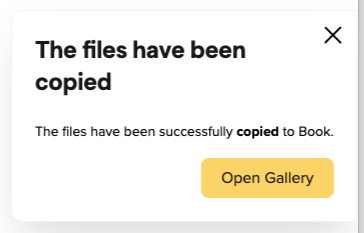
With a click on the button "Go to target gallery" you will be taken directly to the target gallery.
Link to this entryThe picdrop contact sheet
We have included this feature of analogue photography in picdrop, so that every photographer has the possibility to save a contact sheet of his or her galleries from within picdrop. There, e.g. printed out, notes can also be entered by hand.
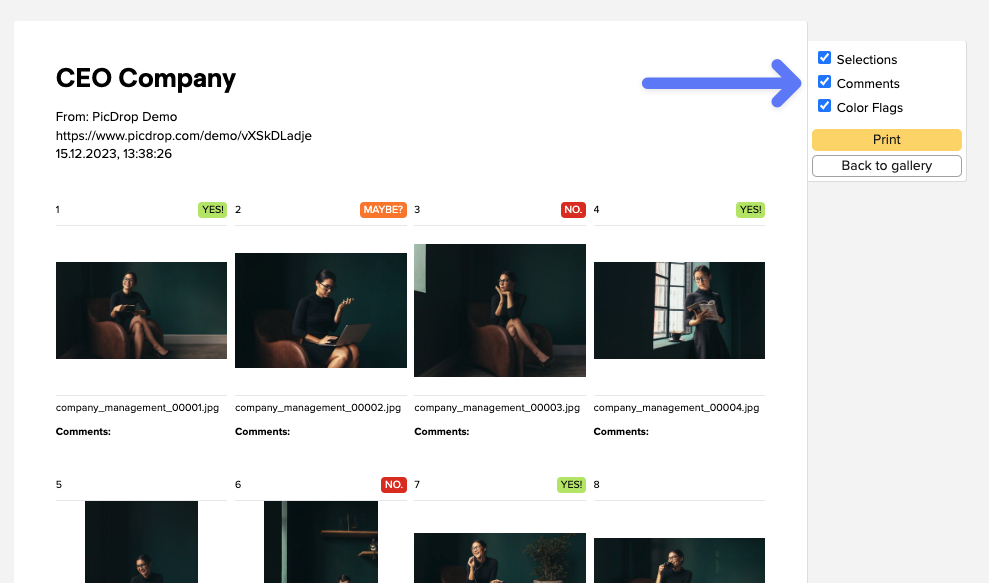
What is a contact sheet used for?
A contact sheet is a great way to compare, evaluate and get an overview of your images - exactly because the images are shown in a small size and all together.
On the contact sheet you have all images of the gallery at a glance and can also choose whether the color markings, comments and selections from picdrop should be directly visible.
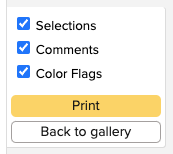
The contact sheet always contains all images of your gallery, as already in analogue times the whole film roll was content of the contact sheet.
How do I create a contact sheet in picdrop?
You can create a contact sheet in every gallery by clicking on "print contact sheet" in the gallery menu...
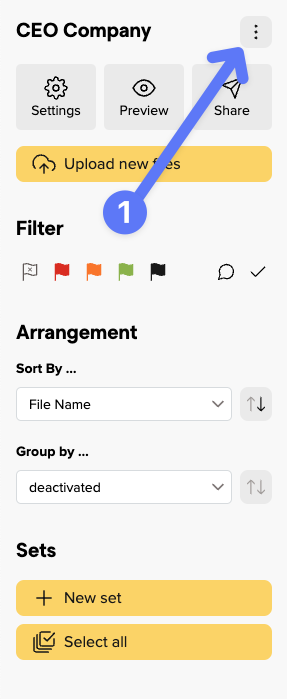
... and then either print it, or save it as PDF with the help of the system dialogue.
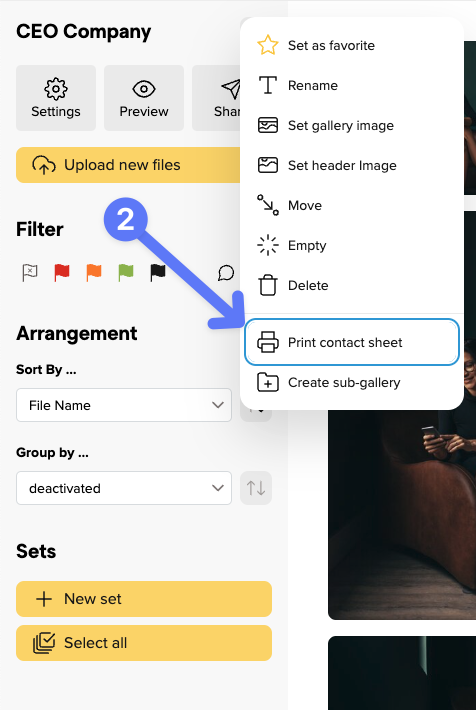
Take pictures directly from a camera into picdrop
ATTENTION
This workflow requires an FTP connection to you picdrop account. You can only use FTP connections with accounts that were created before June 2022.
______
With picdrop it is possible to upload your pictures to picdrop while taking pictures or directly from the camera - without the detour via PC or other devices. This is especially practical if you are looking for speed, as in sports or event shootings, or if your client does not want to be personally present at the shooting but still wants to be there live. There are no limits to your imagination.
This article explains how to technically implement the upload to picdrop. Please note that you need a camera with FTP upload capability for this option. All major manufacturers now offer this function, but it is not installed in every model. Some models also require additional FTP devices or battery handles with built-in FTP function. Please check with your dealer, read your camera's manual or ask Google about your camera's capabilities.
Basics:
picdrop is completely folder-based. This is exactly the way you know it from the folders on your computer. You can retrieve this folder structure with picdrop in your browser or via FTP. Via exactly this FTP channel you can create folders, upload images, move them etc.... This is practical for large amounts of data or when no browser is available.
Above all, however, it is also practical, since some cameras also use this FTP interface. So you need to find out how to activate the FTP upload in your own camera and set it up for personal picdrop access. We have written down instructions for the most common manufacturers: Nikon, Canon, and Sony. In the following, you will find further tips for practical work in everyday life.
Nikon: Set up FTP upload
Connect the camera to your picdrop:
Open the camera settings
Select the Connection Wizard
Select FTP upload
Enter "PicDrop" as network profile name
Find the WLAN you want to use and enter the access data. Select "Automatic IP address" and click "OK".
Enter your FTP access data. You can find them here at any time:
Type: SFTP
Server: ftp.picdrop.com
User ID: Your picdrop username
Password: Your picdrop password
Port 22 for sFTP, port 21 for FTP
Enter the folder name in which you want the images to end up. Never select the option "Home Folder" here, because pictures in the Home Folder are completely ignored and deleted by picdrop.
Pictures are then automatically uploaded to picdrop
Canon: Set up FTP upload
Instructions for Canon cameras will be added shortly. But until then we recommend this very good video: (English)
https://www.youtube.com/embed/zCvPoUy8V3Y
Sony: Set up FTP upload
Our friend and professional photographer, Steffen Böttcher, describes very well (but in German!) in his blog how he uploads pictures directly from his camera to picdrop. Thanks, Steffen! An instruction from us will follow shortly.
More Tips:
Find check beforehand whether there is good wifi connection at the location of your shooting and if you are allowed to use it. Your camera must always be online to upload.
Alternatively, set up your own wifi with your smartphone or a mobile hotspot device to be more independent of third parties. The choice of the right device and the right provider is crucial and depends on your location. Although cheaper network operators in large cities are often just as fast and good as expensive ones, in rural areas they often travel at an edge speed.
Book the often inexpensive "24-hour unlimited surfing" options offered by telecommunications providers during a shooting to set up a hotspot with your mobile phone and upload your pictures without a limit. Deutsche Telekom offers "unlimited data volume" for EUR 4.95 per day - a price that your clients will certainly be happy to pay for the service.
Restoring a deleted gallery
You accidentally deleted a whole gallery in your picdrop account?
Don't panic!
Sometimes there is a chance that you are able to recover them, as we keep deleted galleries for you for a short period of time in the trash bin of your account.
The only condition for you to be able to restore the gallery is that you did not delete it too long ago and you have not created a new gallery with the same name in your account in the meantime.
Just click on the trash bin symbol on the bottom of your gallery list in your dashboard and from there you can restore any of the listed galleries according to your wishes.
Please note that you may only restore complete galleries and not individual files.
In case of recovery, your gallery will be restored with all color flags, comments and selections.
Link to this entry